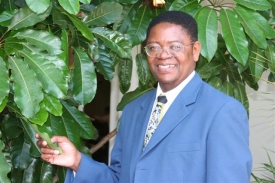 Filed by Steve Ritter
Filed by Steve Ritter
We are back in the U.S. now, and this is the final post for our Brazil blog. Over the past 10 days, Erika and I have chronicled a tour of Brazilian biofuels research centers and production facilities, along with a concluding symposium that set a goal of developing a shared road map for Brazilian-U.S. collaboration on biofuels research.
I could recap the highlights of our trip here, but I think it’s better simply to direct you to the beginning of the blog and let you take a few minutes to read through the entries yourself. You also can follow this link to read a C&EN story on the symposium.
One thing I never got around to doing in the blog is to point out the many historical similarities between Brazil and the U.S. Both countries began as colonies to European powers and were taken advantage of for their natural resources and abundant land suitable for agriculture. The colonists and their expansion essentially destroyed the cultures of the indigenous peoples and assimilated them into a European-style culture—a mostly British influence in the U.S. and an Iberian influence in Brazil.



 Posted by steveritter
Posted by steveritter  Filed by Steve Ritter
Filed by Steve Ritter Filed by Erika Engelhaupt
Filed by Erika Engelhaupt also working to adapt some of Brazil’s many species of plants that typically have not been used in agriculture. Soil scientists are conducting research to ensure that the country’s increase in agricultural production doesn’t destroy the fragile soil ecology. The reddish soil is rich for growing crops (right), but the high mineral content needs to be balanced with organic carbon. Thus, no-till planting techniques that return plant residues to the soil are being encouraged.
also working to adapt some of Brazil’s many species of plants that typically have not been used in agriculture. Soil scientists are conducting research to ensure that the country’s increase in agricultural production doesn’t destroy the fragile soil ecology. The reddish soil is rich for growing crops (right), but the high mineral content needs to be balanced with organic carbon. Thus, no-till planting techniques that return plant residues to the soil are being encouraged. Filed by Erika Engelhaupt
Filed by Erika Engelhaupt Filed by Steve Ritter
Filed by Steve Ritter
